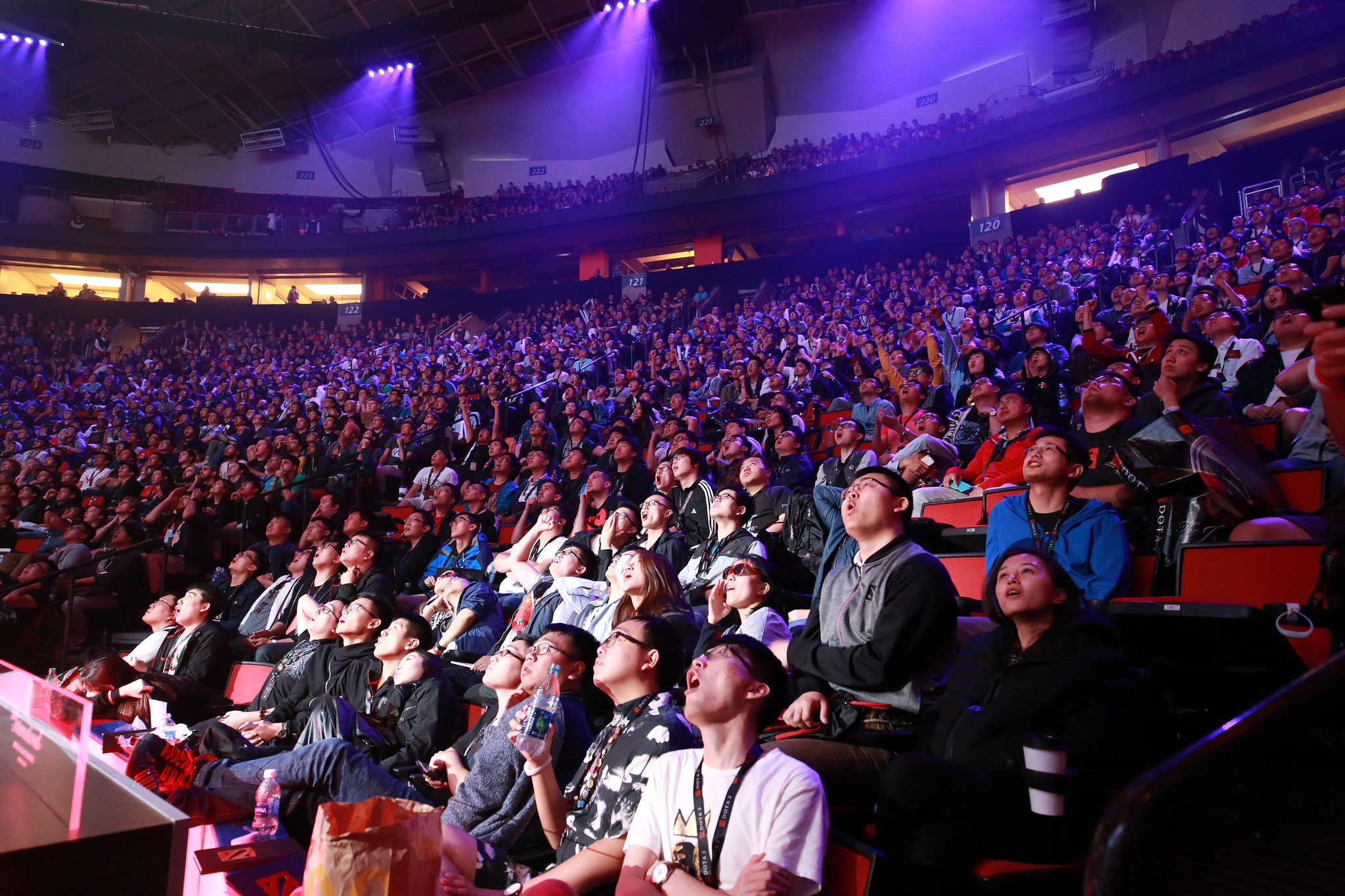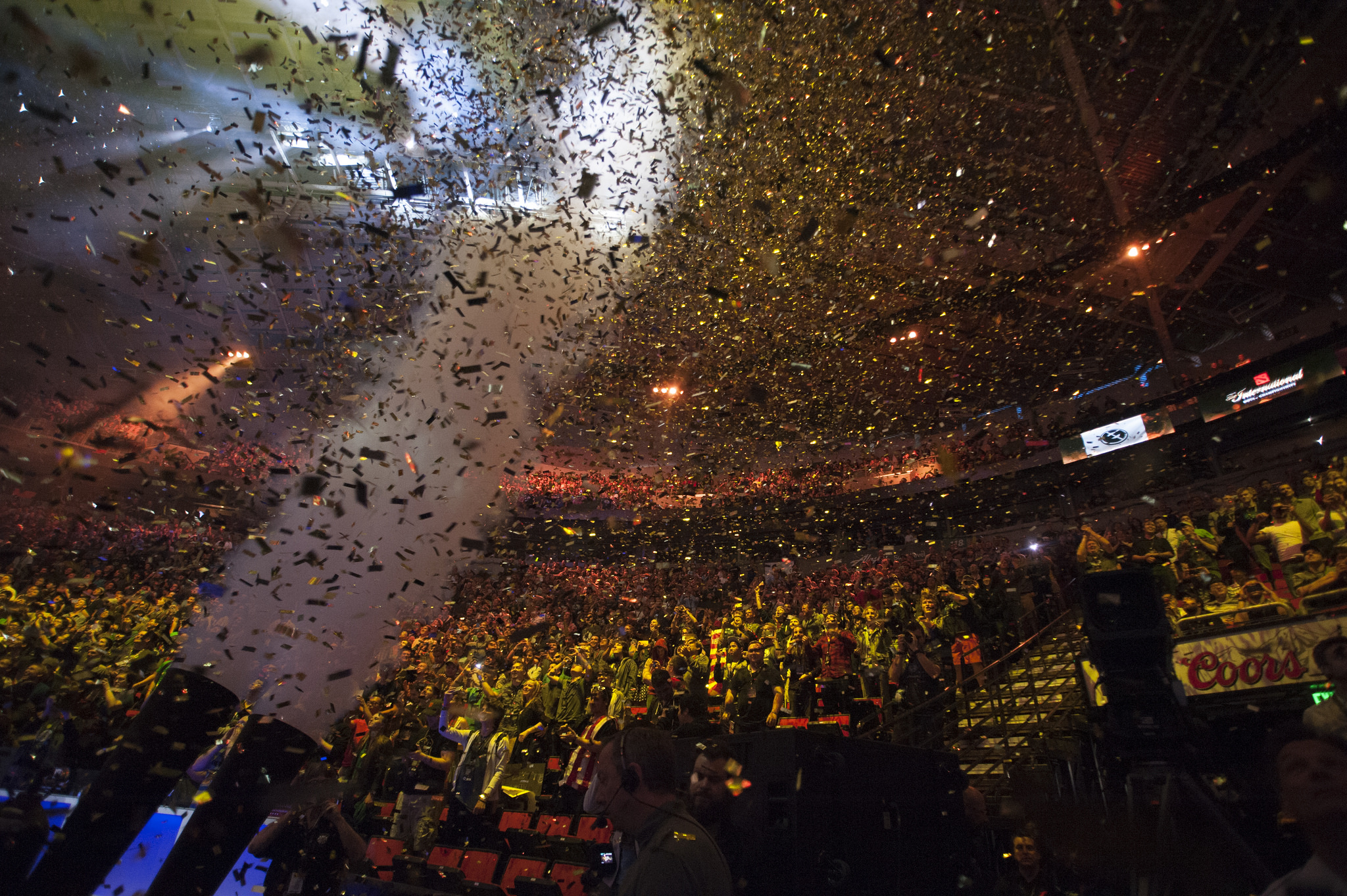Practical tips for watching the Dota 2 International as a newcomer
Learn to stop worrying and love the world's most complex MOBA.

Photos via Valve's official Dota 2 Flickr account.
Every year, The International showcases players from across the globe who have spent countless hours, days and years mastering one of the deepest games ever made. The annual event is reliably one of the most exciting esports events of the year. The issue is that many don’t know where to begin watching it. More intimidating than the game itself is the fear of 'watching the game wrong'—but in reality, the only way to watch Dota 2 wrong is to not watch at all. If you find yourself worried about diving into The International, here are some quick tips that will help you out.
Where to watch
You can watch The International stream on Twitch right here.
You can also watch The International newbie-friendly stream on Twitch.
Want to get fancy? Check out Valve's streams here, in multiple languages, and with corresponding in-game info, gold and experience graphs, etc.
Just do it
Like a child watches soccer, hockey or American football for the first time, we all experience Dota 2 for the first time in one form or another—and, likely, get overwhelmed by the exposure. It happens. After all, many will say that their introduction into the game was The International 3, and the influx in player count shows this. Plus, with millions of dollars on the line, every year draws more and more curious onlookers, whether from another video game or just someone that heard about the prize money. In other words, you’re in good company.
Don’t be scared to dive in and watch. Dota 2 is like rugby or American football: much of what’s going on can’t be explained until you see it practically applied. Concepts such as creep pulling, laning, rotations and 'objective-focused strategies' are execution-based and look much better than they sound.
This year, the Newcomer Stream will also make its return to The International. If you’re a first-time viewer trying to learn some of the basics of the game, this will be a likely first destination for you. It’s unknown if a separate explanation commentary will return, but at the very least, there will be tooltips to enhance your understanding of the game’s strategy and items.
Keep up to date with the most important stories and the best deals, as picked by the PC Gamer team.

Understand the event’s flow (and take breaks!)
What’s nice about Dota 2 is that it keeps a fairly consistent pace throughout the tournament. Some teams will even become predictable, trying to drag out games or end them more quickly. It’s worth keeping an eye out so you can understand when are good times to get up and do errands, such as food breaks or bathroom trips, without worrying too much.
For instance, in the larger scheme of things, while some first games of best-of-three matches can be interesting, you’ll come back and see the same two teams play again next game. There’s often about ten minutes between games, and fifteen to thirty between matches.
On a smaller scale, the time between the walk-on and the end of the hero draft is often just given over to match speculation, and so this is a good 8-to-12-minute mini-break. The early stages of the game, after first blood, are often just intermediate kills, though it’s good to return before about twenty minutes on the in-game clock before teamfights pick up.
Don’t stick to one team
Only following one team will often lead to disappointment (for most fans, anyway). After all, life comes at us fast, and teams get dropped from the eleven-day event as quickly as you discover them. Sixteen teams in, one out.
Do not be scared to bandwagon if a team you chose loses: seriously, it’s you and the rest of the Dota 2 community getting behind that new team.

You don’t have to know everything
A major myth in trying to watch Dota 2, from my experience with new spectators, is that fans assume they need to know every painstaking detail about the game to watch. Even experienced players can be intimidated by the level of play that they’re seeing.
Knowing a lot about Dota 2 will help, but it’s absolutely not necessary. In fact, even if you know more than the average player, that won’t help predict or explain every decision made in a professional game. It won’t explain dives or odd item choices: that’s an analyst’s job, and even then, analysts can also hit a ceiling of knowledge. In other words, even players with thousands of hours in-game can only know so much, so you’re not alone.
If you do think you need help understanding what heroes, items and strategies, there’s no shame in Googling items, asking online communities or consulting with friends. Most of these have more-than-thorough explanations of much of what’s going on. And, the worst case is, the people you ask don’t know either, and you all get to speculate and learn about the game together.

